Remembrance and reflection were part of Southern Illinois University Edwardsville’s Black Heritage Month’s (BHM) Opening Session on Monday, Feb. 1 that highlighted a past full of struggle and strength. Jessica Harris, PhD, assistant provost for academic equity and inclusive excellence in the SIUE Office of the Provost, was the featured speaker.
![BlackHeritageLogo]() Harris chronicled the beginnings of Black History Month in her speech, “Why Black History Month Matters: A Call to Remember. A Call to Greater Achievement” during the virtual celebration sponsored by SIUE’s Center for Student Diversity and Inclusion (CSDI) and the BHM Committee, headed by Tarsha Moore, CSDI assistant director.
Harris chronicled the beginnings of Black History Month in her speech, “Why Black History Month Matters: A Call to Remember. A Call to Greater Achievement” during the virtual celebration sponsored by SIUE’s Center for Student Diversity and Inclusion (CSDI) and the BHM Committee, headed by Tarsha Moore, CSDI assistant director.
“As we celebrate this month, I encourage all of you to do your research and reflect upon contributions made by Black people in this country, both forced and voluntary,” said SIU System President Dan Mahony, PhD. “Also recognize the contributions that Black people have made to SIUE. We have a lot of work to do at SIU and SIUE to be all that we hope to become, and we must continue to support and advocate for Black people. In advocating for diversity, equity and inclusion, we are advocating for a better University and community for all.”
![TarshaMoore]() “The story of Black History Month begins in Chicago during the summer of 1915 with Dr. Carter G. Woodson,” recounted Harris, who served as an associate professor in the SIUE College of Arts and Sciences’ Department of Historical Studies and director of the interdisciplinary Black Studies program before being promoted into administrative roles.
“The story of Black History Month begins in Chicago during the summer of 1915 with Dr. Carter G. Woodson,” recounted Harris, who served as an associate professor in the SIUE College of Arts and Sciences’ Department of Historical Studies and director of the interdisciplinary Black Studies program before being promoted into administrative roles.
Woodson’s advocacy of the widespread dissemination of Black history would lead to the eventual launch of Negro History Week in February 1926. “Woodson chose February to encompass the birthdays of Abraham Lincoln and Frederick Douglass, whose birthdays are the 12th and the 14th, respectively,” Harris explained.
The 1960s and the Civil Rights movement turned Negro History Week into Black History Month, with most celebrations on college campuses. “In 1976, President Gerald Ford officially recognized Black History Month, calling upon the public to ‘seize the opportunity to honor the too-often neglected accomplishments of Black Americans in every area of endeavor throughout our history,’” she recounted. “Every president since Ford has issued a similar proclamation.
“Black history is a call to remember the valiant struggles of freedom fighters like Nat Turner, Harriet Tubman and Harriet Jacobs, and Frederick Douglass who exposed the horrors of slavery and created pathways toward its end. We remember women like Ida B. Wells-Barnett and Mary Church Terrell who not only spoke out against the indignities of racism, but also defended the lives and positions of Black women, when others were silent. We recall the strange fruit of Southern and Northern trees, the Black bodies swinging in the breeze, reminding us of the backlash and violence that those committed to white supremacy can and do wield.
“However, we also remember W.E.B. Du Bois, A. Philip Randolph, Ella Baker, Fannie Lou Hamer, John Lewis, Huey Newton, Bobby Seale, Fred Hampton, Robert Williams—and the countless invisible foot soldiers whose sacrifices and service have opened a number of pathways and opportunities for us today.”
Also on the program were SIUE Black Theatre Workshop (BTW) students Heaven Bones and Tylan Tarron, who performed “Stand Black,” a piece written by Bones, Taron and Kiara Ullmer. Bones is a junior majoring in psychology, and minoring in theater and Black studies. Taron is a junior majoring in theater design. Ullmer is an SIUE alumna.
“Black is the hue of royalty … proud adorned jewels of excellence … our blood holds the magic that illuminates our souls,” resounded Taron. “Our stories are passed down through art, poetry, dance … We create with love and light, but we speak words seasoned with soul. Our essence is what birthed this nation … Black is not meant to be feared. Black is nothing to be ashamed of. Black is not violent. Black is magical, vibrant and bold.”
“Why doesn’t anyone listen to me? … Oh, you can’t because I’m angry, right?” intoned Bones. “I’m sick and tired of everyone assuming that I’m just angry for no reason … I’m angry, because I feel my voice has been silenced my whole life. … Since the 19th century, Black women have been stereotyped as loud, ‘ratchet,’ promiscuous, uneducated …This woman right here ain’t ‘ratchet.’ This woman ain’t promiscuous. I work hard, and I go to school full time, thank you very much …We have humanity in us.”
In another part of the program, Bentley asked, “What makes us resilient, and who are the resilient people you know?”
Responses in the chat included:
- “Maintaining hope – never giving up. Taking the pain and loss endured, and using that as our super power makes us beautiful and strong” – R’Eyanna Moore
- “Dr. Eugene B. Redmond, Black faculty and staff on this campus” – Lydia Jackson
- “My ancestors who crossed the Middle Passage. My grandmother, my father, my brother” – Venessa Brown
- “The way in which we struggle with Racial Battle Fatigue, we have no choice but to be resilient in a racist space” – Robin Hughes
- “Black resilience is the continued and collective uplifting that is practiced daily outside of the lens of public consumption.” – Derrick Houston
The audience was also treated to two videos – one looking at SIUE Black history and promise, and the other on those Black people, stars and movements who have been the most searched on the internet.
“The research, reflection or advocation for positive change should not be confined to Black Heritage Month or this opening ceremony,” said Mahony. “Black history is American history, and I encourage us to embrace and recognize that. In fact, studying American history without studying Black history is like reading a book with several critically important pages missing from each chapter. Without those pages, it doesn’t leave you with a really good understanding of American history. Often, it leaves you with a misunderstanding of American history.”
“One final element for us to reflect on is that we have the same history makers right here at SIUE,” concluded Moore. “They are here. They are energetic. They are ready to learn and get out in the community and inspire. When we think about Black resilience, we should think about the beautiful Black bodies that are at SIUE, who contribute in so many positive ways not just during Black Heritage Month, but every single day.”
For information on other upcoming events, visit BHM calendar.
Photo:
Tarsha Moore, Black Heritage Month committee chair and CSDI assistant director.
![]()
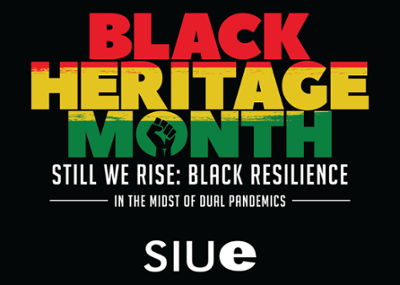 “Still We Rise: Black Resilience in the Midst of Dual Pandemics” is the theme for the 2021 Black Heritage Month (BHM) at Southern Illinois University Edwardsville.
“Still We Rise: Black Resilience in the Midst of Dual Pandemics” is the theme for the 2021 Black Heritage Month (BHM) at Southern Illinois University Edwardsville. 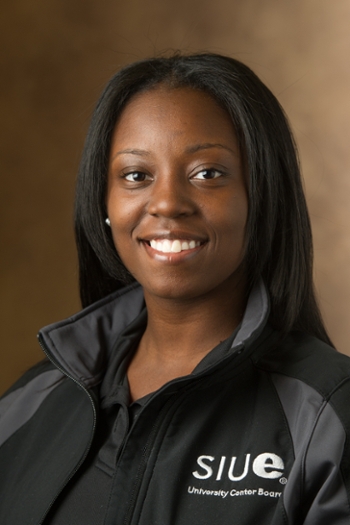 Whether it’s looking at the State of the Black Union on campus, attending a health panel discussion, delving into the sociopolitical reality of Black women or discovering the “African American Ambition in the Era of Slavery,” the month will be chock-full of opportunities, according to Moore.
Whether it’s looking at the State of the Black Union on campus, attending a health panel discussion, delving into the sociopolitical reality of Black women or discovering the “African American Ambition in the Era of Slavery,” the month will be chock-full of opportunities, according to Moore. 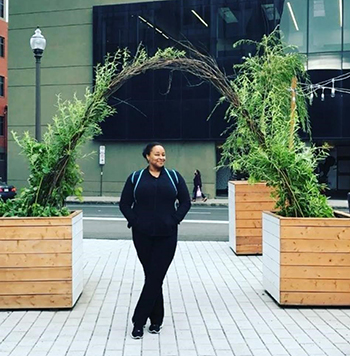 Southern Illinois University Edwardsville alumna Sacha Jackson of, Edwardsville, who earned a bachelor’s in anthropology, French and psychology in May 2020, achieved third place in the Lambda Alpha Senior Scholarship Award competition of the Lambda Alpha National Anthropology Honor Society – a first for a student in the College of Arts and Sciences’ Department of Anthropology.
Southern Illinois University Edwardsville alumna Sacha Jackson of, Edwardsville, who earned a bachelor’s in anthropology, French and psychology in May 2020, achieved third place in the Lambda Alpha Senior Scholarship Award competition of the Lambda Alpha National Anthropology Honor Society – a first for a student in the College of Arts and Sciences’ Department of Anthropology.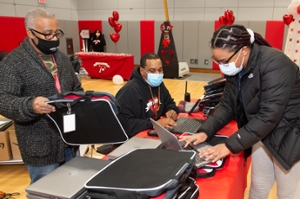 It was out with the old and in with the new – Chromebooks that is – when students showed up for the Southern Illinois University Edwardsville East St. Louis Charter High School’s (CHS) January school supply pickup.
It was out with the old and in with the new – Chromebooks that is – when students showed up for the Southern Illinois University Edwardsville East St. Louis Charter High School’s (CHS) January school supply pickup. 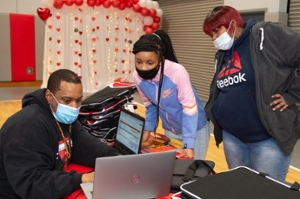 Each student also received the following items:
Each student also received the following items: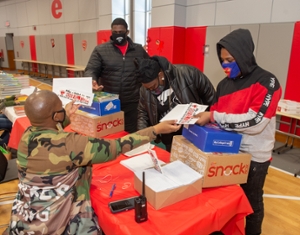 “Some parents were brought to tears, because they were finding it difficult to manage unreliable internet issues during the pandemic in which they had no control over,” Jeffries revealed. “We are also pleased to provide families’ with food-related items. It’s difficult to concentrate on academics, when the basic need for food is unmet.”
“Some parents were brought to tears, because they were finding it difficult to manage unreliable internet issues during the pandemic in which they had no control over,” Jeffries revealed. “We are also pleased to provide families’ with food-related items. It’s difficult to concentrate on academics, when the basic need for food is unmet.” 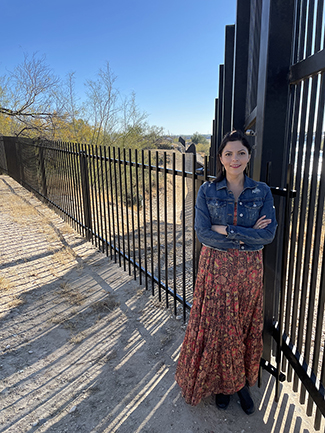 The Southern Illinois University Edwardsville Graduate School has presented its 2021-23
The Southern Illinois University Edwardsville Graduate School has presented its 2021-23 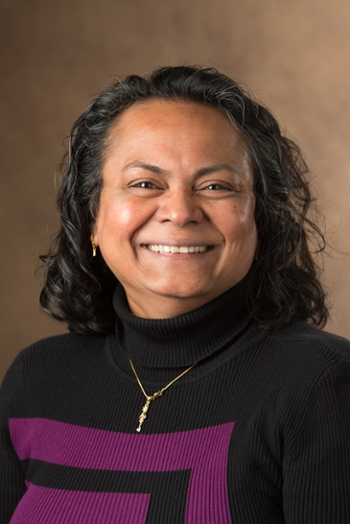 Southern Illinois University Edwardsville celebrated a faculty member, a staff member and a student with awards during part two of its 38th annual Dr. Martin Luther King Jr. Celebration, held virtually on Friday, Jan. 29 and hosted by SIUE’s Center for Student Diversity and Inclusion (CSDI). The theme for the two-part celebration was one of King’s prolific quotes: “Change does not roll in on the wheels of inevitability but comes through continuous struggle.”
Southern Illinois University Edwardsville celebrated a faculty member, a staff member and a student with awards during part two of its 38th annual Dr. Martin Luther King Jr. Celebration, held virtually on Friday, Jan. 29 and hosted by SIUE’s Center for Student Diversity and Inclusion (CSDI). The theme for the two-part celebration was one of King’s prolific quotes: “Change does not roll in on the wheels of inevitability but comes through continuous struggle.” 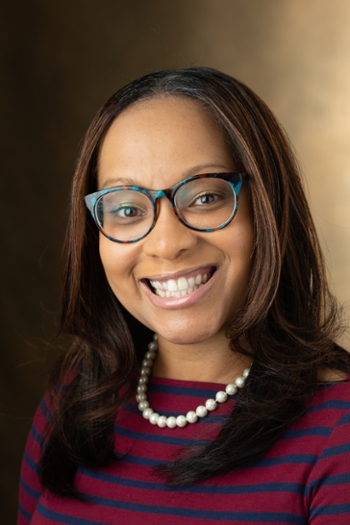 “I absolutely enjoy every opportunity I have had to serve my SIUE colleagues,” said Pannirselvam, who has worked at the University for more than 25 years. “The Diversity Council is probably where I grew the most, with honest conversation that enhanced my approach to work. The work of SIUE’s Anti-Racism Task Force gives me the most contentment and hope. We had honest and difficult conversations about institutionalized racism, and we saw the need for change from a system’s perspective.
“I absolutely enjoy every opportunity I have had to serve my SIUE colleagues,” said Pannirselvam, who has worked at the University for more than 25 years. “The Diversity Council is probably where I grew the most, with honest conversation that enhanced my approach to work. The work of SIUE’s Anti-Racism Task Force gives me the most contentment and hope. We had honest and difficult conversations about institutionalized racism, and we saw the need for change from a system’s perspective. 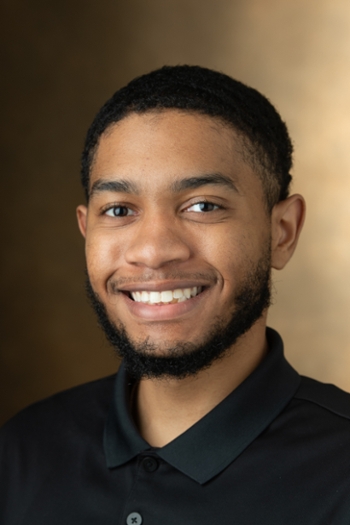 A grateful Adkins gave remarks about being the 2021 scholarship recipient, and thanked his family, SIUE mentors and community who support him in his academic career and life goals. “With this scholarship money, I plan on continuing my education at SIUE. My plan is to enroll in a doctoral program for the profession of chiropractic,” he said. “I also plan on being a better version of myself, which includes having faith, remaining steadfast amid adversity, utilizing my position and influence to empower others, and shift a space/culture into a new paradigm.
A grateful Adkins gave remarks about being the 2021 scholarship recipient, and thanked his family, SIUE mentors and community who support him in his academic career and life goals. “With this scholarship money, I plan on continuing my education at SIUE. My plan is to enroll in a doctoral program for the profession of chiropractic,” he said. “I also plan on being a better version of myself, which includes having faith, remaining steadfast amid adversity, utilizing my position and influence to empower others, and shift a space/culture into a new paradigm.  Difference makers can be described in many ways: proactive, improves the lives of others, service driven and more. Amid the ongoing pandemic, difference makers are all around, helping individuals overcome challenges, coordinating support mechanisms, creatively adapting activities and offering light through darkness.
Difference makers can be described in many ways: proactive, improves the lives of others, service driven and more. Amid the ongoing pandemic, difference makers are all around, helping individuals overcome challenges, coordinating support mechanisms, creatively adapting activities and offering light through darkness.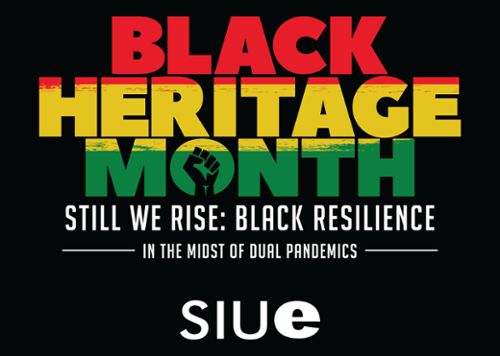 Harris chronicled the beginnings of Black History Month in her speech, “Why Black History Month Matters: A Call to Remember. A Call to Greater Achievement” during the virtual celebration sponsored by SIUE’s Center for Student Diversity and Inclusion (CSDI) and the BHM Committee, headed by Tarsha Moore, CSDI assistant director.
Harris chronicled the beginnings of Black History Month in her speech, “Why Black History Month Matters: A Call to Remember. A Call to Greater Achievement” during the virtual celebration sponsored by SIUE’s Center for Student Diversity and Inclusion (CSDI) and the BHM Committee, headed by Tarsha Moore, CSDI assistant director. 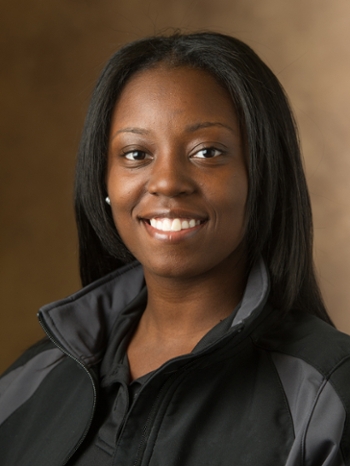 “The story of Black History Month begins in Chicago during the summer of 1915 with Dr. Carter G. Woodson,” recounted Harris, who served as an associate professor in the SIUE College of Arts and Sciences’ Department of Historical Studies and director of the interdisciplinary Black Studies program before being promoted into administrative roles.
“The story of Black History Month begins in Chicago during the summer of 1915 with Dr. Carter G. Woodson,” recounted Harris, who served as an associate professor in the SIUE College of Arts and Sciences’ Department of Historical Studies and director of the interdisciplinary Black Studies program before being promoted into administrative roles. 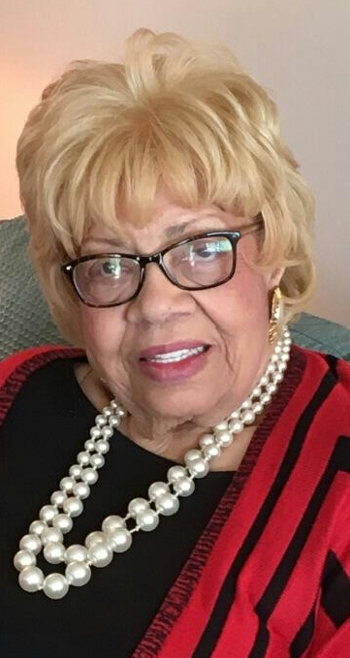 First and foremost, Johnetta Randolph Haley was an ardent educator with an impressive character, drive and strength that left no question as to her capabilities, which were vast, and her intentions which were honest and helpful. Haley, whose service at Southern Illinois University Edwardsville spanned nearly 48 years, passed away Sunday night, Jan. 30.
First and foremost, Johnetta Randolph Haley was an ardent educator with an impressive character, drive and strength that left no question as to her capabilities, which were vast, and her intentions which were honest and helpful. Haley, whose service at Southern Illinois University Edwardsville spanned nearly 48 years, passed away Sunday night, Jan. 30. 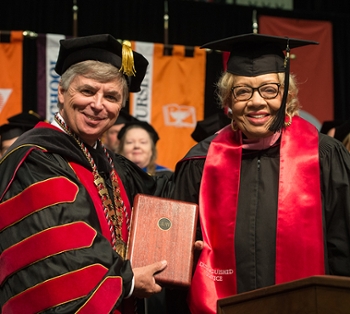 scholars. She spoke to students, offering words of wisdom, encouragement and support as they began their academic journeys. The Johnetta Haley Leadership Academy, administered through the SOAR office, will continue her work to support her vision for the next generation.”
scholars. She spoke to students, offering words of wisdom, encouragement and support as they began their academic journeys. The Johnetta Haley Leadership Academy, administered through the SOAR office, will continue her work to support her vision for the next generation.”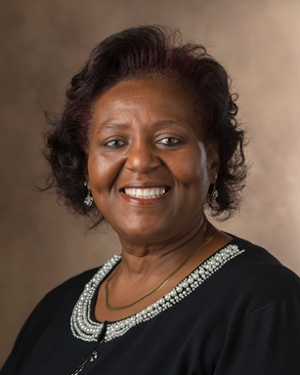 Southern Illinois University Edwardsville Associate Chancellor and Chief Diversity Officer Venessa A. Brown, PhD, has been recognized by Diverse: Issues In Higher Education magazine as one of 25 women who have a made a difference in higher education.
Southern Illinois University Edwardsville Associate Chancellor and Chief Diversity Officer Venessa A. Brown, PhD, has been recognized by Diverse: Issues In Higher Education magazine as one of 25 women who have a made a difference in higher education.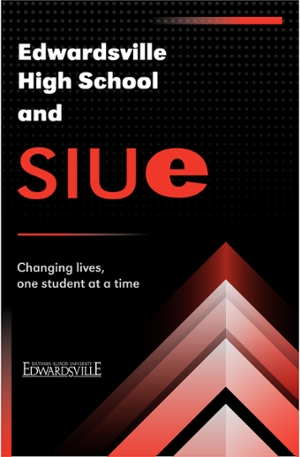 The Southern Illinois University Edwardsville Office of Admissions is celebrating School Counselor Week Feb. 1-5 by sending posters to a variety of regional schools and their counselors. The American School Counselor Association (ASCA) annually sponsors the event each February.
The Southern Illinois University Edwardsville Office of Admissions is celebrating School Counselor Week Feb. 1-5 by sending posters to a variety of regional schools and their counselors. The American School Counselor Association (ASCA) annually sponsors the event each February. 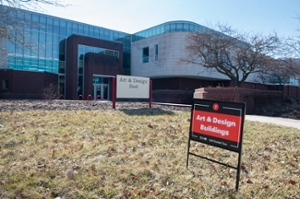 The Southern Illinois University Edwardsville Office of Admissions is offering new self-guided tours as an option for prospective students and their families to safely visit campus during the COVID-19 pandemic.
The Southern Illinois University Edwardsville Office of Admissions is offering new self-guided tours as an option for prospective students and their families to safely visit campus during the COVID-19 pandemic. The Society of Women Engineers (SWE) at Southern Illinois University Edwardsville is hosting its ninth annual “
The Society of Women Engineers (SWE) at Southern Illinois University Edwardsville is hosting its ninth annual “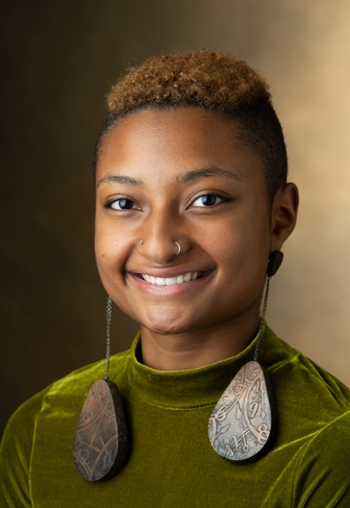 Reaching back to an ugly time in history and melding it with a current musical and cultural theme to present art which illustrates the intertwined, complex and oppressive nature of U.S. race relations, Kylea Perkins is stretching her creative limits as much as the copper and silver material with which she so diligently and lovingly labors.
Reaching back to an ugly time in history and melding it with a current musical and cultural theme to present art which illustrates the intertwined, complex and oppressive nature of U.S. race relations, Kylea Perkins is stretching her creative limits as much as the copper and silver material with which she so diligently and lovingly labors. 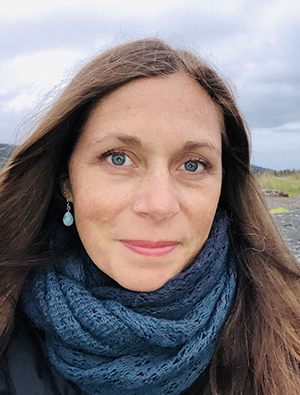 Why is it so challenging to find lasting happiness? How can we develop practices that help create greater peace and joy? The answers to those questions and more are being shared in a new Southern Illinois University Edwardsville online course entitled Mindfulness for Helping Professionals.
Why is it so challenging to find lasting happiness? How can we develop practices that help create greater peace and joy? The answers to those questions and more are being shared in a new Southern Illinois University Edwardsville online course entitled Mindfulness for Helping Professionals. The Southern Illinois University Edwardsville Offices of Student Affairs and Academic Affairs have opened a new Military and Veteran Resource Center (MAVRC)
The Southern Illinois University Edwardsville Offices of Student Affairs and Academic Affairs have opened a new Military and Veteran Resource Center (MAVRC) “The resource center connects this population with peers who they can simply talk to and be themselves,” Reinhardt said. “We also connect students with services that assist them in reintegrating into civilian life in order to have a successful academic and professional experience at SIUE and throughout the rest of their life. Right now, the resource center is in the process of establishing programs and activities that center on issues such as diversity and inclusion, women and gender matters, and peer mentoring.”
“The resource center connects this population with peers who they can simply talk to and be themselves,” Reinhardt said. “We also connect students with services that assist them in reintegrating into civilian life in order to have a successful academic and professional experience at SIUE and throughout the rest of their life. Right now, the resource center is in the process of establishing programs and activities that center on issues such as diversity and inclusion, women and gender matters, and peer mentoring.”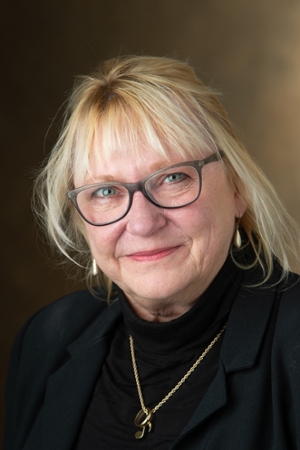 The life and experiences of local Black influencer Conway Barbour serve as the foundation of Southern Illinois University Edwardsville’s first Sankofa Lecture and Dialogue Series presentation of 2021.
The life and experiences of local Black influencer Conway Barbour serve as the foundation of Southern Illinois University Edwardsville’s first Sankofa Lecture and Dialogue Series presentation of 2021.

 The Southern Illinois University Edwardsville School of Pharmacy (SOP) will drop the Pharmacy College Admission Test (
The Southern Illinois University Edwardsville School of Pharmacy (SOP) will drop the Pharmacy College Admission Test (